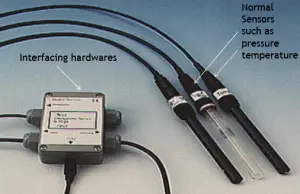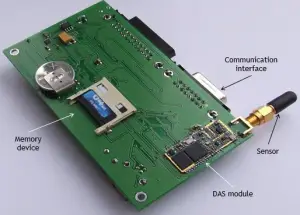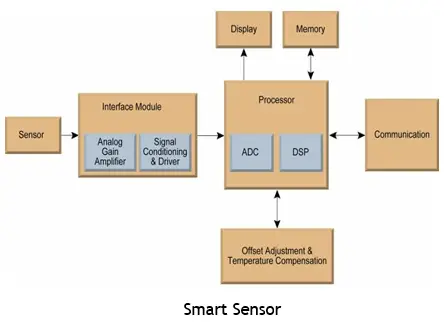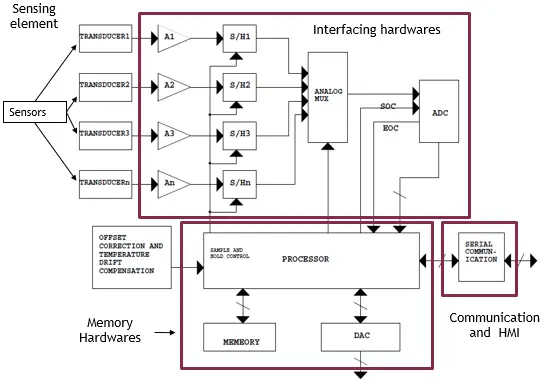A sensor producing an electrical output, when combined with some interfacing hardware is termed to be an intelligent sensor. Intelligent sensors are also called smart sensors, which is a more acceptable term now.
Sensors + Interfacing hardwares = Smart sensors
This type of sensor is different from other types of sensors because it carries out functions like ranging, calibration and decision making for communication and utilization of data.


Block Diagram of Smart Sensors

What are the features of smart sensors?
The features of smart sensors are as follows
- Automatic ranging and calibration of data through a built-in system.
- Automatic DAS and storage of calibration constants in a local memory of the field device.
- Automatic linearization of nonlinear transfer functions.
- Auto-correction of offsets, time and temperature drifts.
- Self-tuning control algorithms.
- Control is implementable through a signal bus and a host system.
- Initiates communication through a serial bus.
Architecture of a smart sensor

The general architecture of a smart sensor has the following components namely
- Sensing element and transduction element.
- Interfacing Hardware/Data Acquisition System (DAS)
Signal Conditioning Devices.
Conversion Devices. - Programming Devices(Processor)
- Communication Interfaces.
Applications of Smart Sensors
- General Applications
- Industrial Applications
- Medical Applications
General Applications
Smart sensor enhances the following applications:
- Self-calibration: Adjust the deviation of the output of the sensor from the desired value.
- Communication: Broadcast information about its own status.
- Computation: Allows one to obtain the average, variance and standard deviation for the set of measurements.
- Multisensing: A single smart sensor can measure temperature, pressure, gas flow, humidity, infrared, chemical reaction, surface acoustic vapour, etc.
Industrial Applications
1. Accelerometer
An accelerometer consists of the sensing element and electronics on silicon. It itself is a metal-coated SiO2 cantilever beam that is fabricated on a silicon chip where the capacitance between the beam and the substrate provides the output signal.
2. Optical Sensor
It is one of the examples of a smart sensor, which is used for measuring exposure in cameras, optical angle encoders, and optical arrays.
3. Infra red detector
Infra red detector is developed at the solid laboratory of the University of Michigan. The infrared sensing element is developed using polysilicon.
4. Structural Monitoring
Smart sensors so implemented for this Structural Monitoring application are used for detecting any type of defects or fractures in the structures or infrastructures.
5. Geological Mapping
- Geological Mapping is needed mainly to detect the minerals in the geological areas.
- Digital imaging & interpretation of tunnel geology.
- Remote measurements of tunnel response.
Medical Applications
Smart sensors found applications in
- Medical diagnostics
- Safety hazard detection and warning
- Food safety
- Biological hazard detection
- Health monitoring
- Environmental monitoring both locally and globally

Please add these topics also ->
Characteristic of smart sensors:
1)Self-calibration
2)Self-testing
3) self-communicating,
Application of smart sensors: Automatic robot
control & automobile engine control.